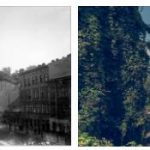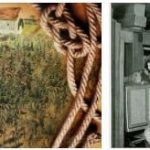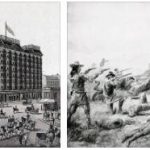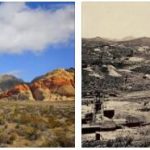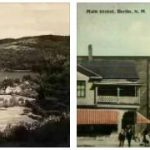Population: 3 791.508 thousand people (2011)
Area: 181196.0 sq. km
The landowner state, Oklahoma, is located within the Great Plains. Endless steppes indented by large rivers of the Mississippi basin (Red River, Canadian, Arkansas ) occupy most of the territory. To the east alone are the low mountain ranges of Washita and Boston. In the west, there is a section of the picturesque Glass Mountains.
Climatically, Oklahoma is not very diverse. The state lies in the subtropical climate zone. Precipitation is unevenly distributed: the western regions are much arider than the eastern ones. Oklahoma is located in the Tornado Alley zone – the most powerful and destructive hurricanes pass through this state. Several films about tornadoes were filmed in Oklahoma. The economy of the state is based on the production of crops (mainly corn and wheat) and oil production.
The name of the state comes from the Choctaw Indian language. “Okla humma” means red people. The nickname of the state was fixed at the end of the 19th century, when the so-called “Earth Races” were organized among the settlers for the right to own land in the state.
Prior to the European invasion, Oklahoma was inhabited by the Quapo, Wichita, Osage, and Caddo tribes. In the 16th century, Spanish expeditions penetrated here, and until 1803 Oklahoma was disputed by the French and Spaniards. The United States purchased the Oklahoma lands from France as part of the Louisiana colony in 1803. Already in the 1830s, the US government organized reservations for the indigenous population. Cherokee, Seminole, Choctaw, Creeks were brought here. In the Civil War, Oklahoma Indians supported both sides. Now Oklahoma is the state where the percentage of the Indian population is the highest in the United States. It wasn’t until 1907 that Oklahoma became a state.
Tourism plays an important role in the state’s economy. Here you can visit the restored village of the Cherokee Indians, the famous “route 66” lies here, on which the towns of “one-story America” are located with many antique shops. The resort town of Medicine Park, the rodeo town of Pain, the futuristic complex of Roberts University, the Robber’s Cave forest park and the Golden Driller statue ( Tulsa city ) are popular.
NORMAN
Population: 110.925 thousand people (2010)
Area: 490.8 sq. km
Founded: 1889
Time zone: UTC-6, summer UTC-5
Altitude: 357 m
Norman is part of the Oklahoma City metropolitan area and is the county seat of Cleveland County. It was founded during the historical event “Land Races” in 1889, when part of the settlers from Europe had the opportunity to become the owner of a plot on land previously owned by the Creek Indian tribe. The settlement got its name by the name of the first land surveyor Abner Norman, a surveyor and leader of a group of specialists involved in the study of the local territory. Their temporary camp was set up in the area where the city streets of Lindsey and Klassen now intersect. One of the expedition members burned the inscription “Norman’s Camp” on the trunk of a large tree.
Subsequently, the settlers who arrived here retained the name of the temporary campsite of surveyors for the settlement. The first participants in the construction were 150 settlers. Among them, the leading positions were held by Delbert Larsch and Thomas Wagoner. It was they who put forward a proposal to the local government to establish the first university in the state in the future city. In December 1890, a decision was made in their favor, which served as the basis for the creation of a higher educational institution.
Since the beginning of its foundation, Norman has been actively built up. By the beginning of the 20th century, two banks, a flour mill, two hotels, and residential buildings stood on its streets. After the railway line was drawn through the city, Norman began to develop even more actively. In 1941, local authorities established an airstrip on the campus of the university and soon leased it to the US Navy to organize a training center. Now the runway, as before, is under the control of a higher education institution and is called “Westheimer Airport of the University of Oklahoma.”
Modern Norman’s main employers are the institution of higher education and research centers. The university owns a number of cultural institutions, in particular the Fred Jones Jr. Museum of Art. It houses, among other exhibits, the largest collection of French Impressionists. The university has its own football team, the Oklahoma Sooners, whose home games attract almost 70,000 fans from all over the state.
OKLAHOMA CITY
Population: 591,967 thousand people (2011)
Area: 1608.8 sq. km
Founded: 1889
Time zone: UTC-6, summer UTC-5
Altitude: 396 m
Oklahoma’s capital and largest city is Oklahoma City. Located in the center of the state, the city is divided by the North Canadian River into approximately equal parts: northern and southern.
The name “Oklahoma” in the language of the Choctaw Indians means “red people”, that is, the Indians. The city appeared in 1889, when the US government allowed the construction of settlements on the local lands, previously inhabited by Indians. 10 thousand settlers immediately moved here. Already in 1910, the greatly enlarged Oklahoma City became the capital of the state. Oil found in the area also contributed to the development and growth of Oklahoma City.
In the city, despite a stable economic situation, the crime rate is quite high, which is associated with the activities of Negro and Latin drug dealers. Another problem for Oklahoma City is frequent hurricanes. Recently, the city was hit by two strong tornadoes: in 1999 and 2013.
Oklahoma City is the cultural and tourist center of the state. The central part of the city is indented with canals, through which passengers are transported by water taxis. The city has skyscrapers: the highest – the 52-storey Devon Tower – reaches 257 meters. Five more exceed 100 meters in height. There are also old architectural sights, represented by the State Capitol, the government building, administrative buildings and former mansions.
The most famous park area in the capital of Oklahoma is the National Memorial, built in memory of the victims of the terrorist attack that occurred in the city in 1995. For leisure and recreation in Oklahoma City, there are also museums, theaters, restaurants, clubs and sports arenas.
Edmond, Oklahoma
History and Climate of Edmond, Oklahoma:
History: Edmond, Oklahoma, located in the central part of the state, has a history that reflects the broader narrative of Oklahoma’s development, from Native American lands to the establishment of settlements and the growth of a diverse community.
- Native American Presence: Before European settlement, the land that would become Edmond was inhabited by various Native American tribes, including the Caddo, Comanche, and Osage. The region was part of the Indian Territory designated for the resettlement of Native American tribes forcibly relocated from their ancestral lands in the southeastern United States.
- Land Run of 1889: Edmond’s modern history began with the Land Run of 1889, a historic event that opened unassigned lands for settlement. On April 22, 1889, thousands of settlers raced to claim plots of land as part of the federal government’s plan to open up the territory for non-Indigenous settlement. Edmond’s establishment can be traced back to this significant event, with settlers staking their claims and creating a new community.
- Growth and Development: The early years saw Edmond developing as an agricultural and trading community. The arrival of the railroad in 1889 further facilitated growth, making it easier to transport goods and people. The city became a commercial center for the surrounding agricultural region.
- Educational Hub: In 1890, the Territorial Normal School (now the University of Central Oklahoma) was established in Edmond. The presence of an educational institution contributed to the city’s development as an intellectual and cultural center. The university continues to play a significant role in shaping Edmond’s identity.
- Incorporation and Expansion: Edmond was officially incorporated as a town in 1889 and as a city in 1901. The city continued to expand, attracting residents with its educational opportunities, community spirit, and economic prospects. Edmond has experienced steady growth over the decades, transitioning from a small settlement to a thriving suburban community.
- Cultural and Recreational Development: Edmond has invested in cultural and recreational amenities, including parks, museums, and community events. The city’s commitment to preserving its history is evident in efforts to maintain historic structures and landmarks.
Climate: According to Clothingexpress, Edmond, Oklahoma, experiences a humid subtropical climate, characterized by hot summers, mild winters, and a mix of precipitation throughout the year.
- Summer (June-August): Summers in Edmond are hot, with average high temperatures ranging from the mid-80s to mid-90s Fahrenheit. The region can experience occasional heatwaves, and residents often seek relief in air-conditioned spaces or outdoor water activities. Summer evenings are generally warm.
- Fall (September-November): Fall brings a gradual cooling of temperatures, with average highs ranging from the mid-60s to mid-70s Fahrenheit. The season is characterized by mild weather and a decline in humidity. Fall foliage adds a touch of color to the landscape.
- Winter (December-February): Winters in Edmond are mild, with average high temperatures ranging from the mid-40s to mid-50s Fahrenheit. While snowfall is infrequent, the region can experience cold spells. Winter nights can be cool, but extreme cold is rare.
- Spring (March-May): Spring sees a gradual warming of temperatures, with average highs ranging from the mid-60s to mid-70s Fahrenheit. As flowers bloom and trees regain their foliage, the city experiences a renewal of life. Spring is an ideal time for outdoor activities and community events.
Edmond is located in Tornado Alley, and severe weather, including thunderstorms and tornadoes, can occur in the spring and early summer months. Residents are accustomed to weather variations and take necessary precautions during storm season.
Edmond, Oklahoma, has a history shaped by Native American presence, the Land Run of 1889, and subsequent growth as a commercial and educational hub. The city’s climate, marked by distinct seasons and the potential for severe weather, contributes to its character and influences the range of recreational activities available to residents.





